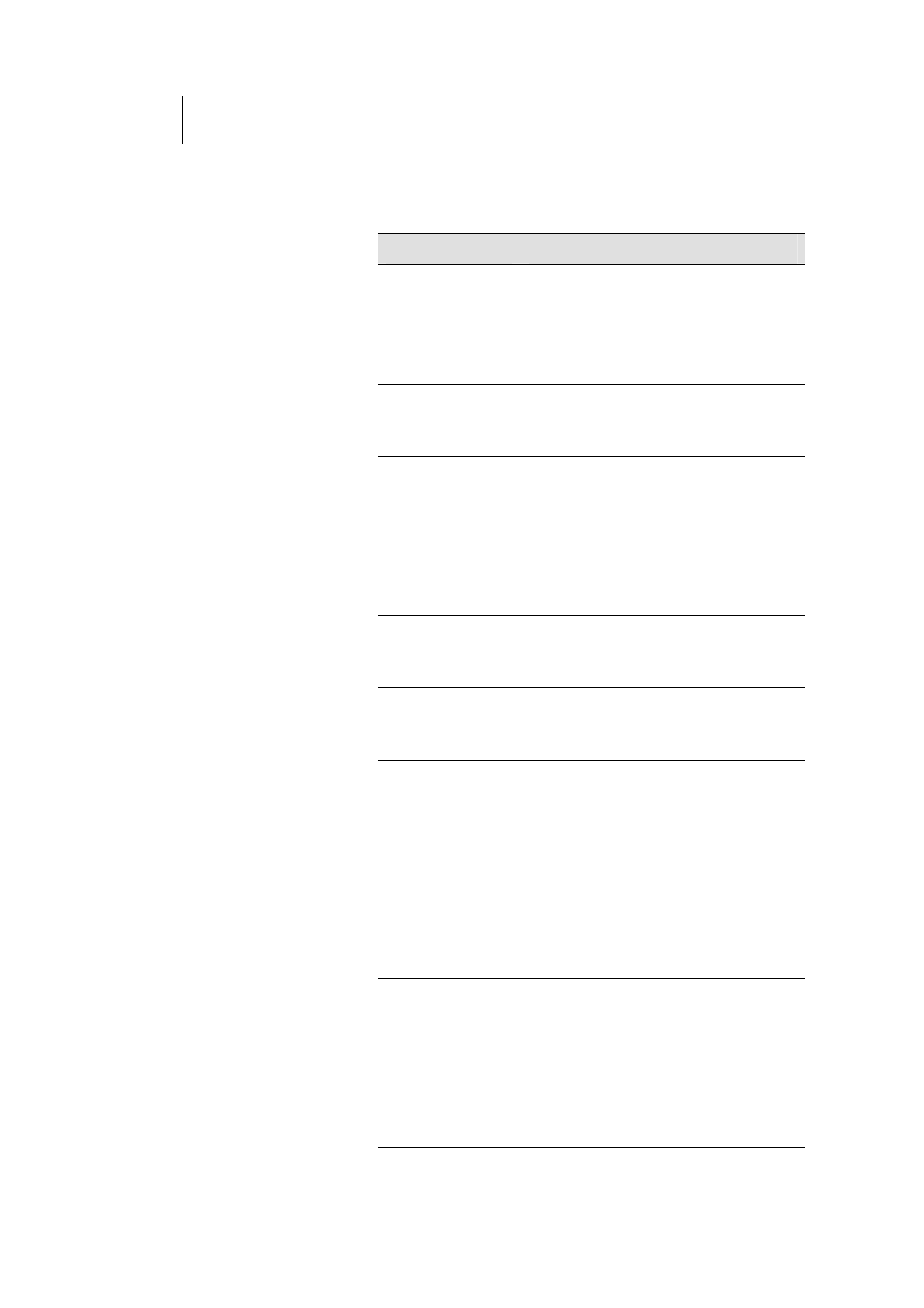ATL Telecom AM30 User Manual
Page 132

132
ATL Telecom User Guide
AM30
2.
Enter or select data for each field that applies to your rule.
The following table describes the fields:
Field
Description
Rule ID
Each rule must be assigned a sequential ID
number. Rules are processed from lowest to
highest on each data packet, until a match is
found. It is recommended that you assign
rule IDs in multiples of 5 or 10 (e.g., 10, 20,
30) so that you leave enough room between
them for inserting a new rule if necessary.
Action
The action that will be taken when a packet
matches the rule criteria. The action can be
Accept (forward to destination) or Deny
(discard the packet).
Direction
Specifies whether the rule should apply to
data packets that are incoming or outgoing
on the selected interface.
Incoming refers to packets coming from the
LAN, and outgoing refers to packets going
to the Internet.
You can use rules that specify the incoming
direction to restrict external computers from
accessing your LAN.
Interface
The interface on the ROUTER on which the
rule will take effect. See the examples on
page 137 for suggestions on choosing the
appropriate interface for various rule types.
In Interface
The interface from which packets must have
been forwarded to the interface specified in
the previous selection. This option is valid
only for the outgoing direction.
Log Option
When Enabled is selected, a log entry will be
created on the system each time this rule is
invoked. The log entry will include the time
of the violation, the source address of the
computer responsible for the violation, the
destination IP address, the protocol being
used, the source and destination ports, and
the number violations occurring in the
previous x minutes. (Logging may be helpful
when troubleshooting.) This information can
also be e-mailed to designated
administrators. See Chapter 0, “Configuring
Firewall Settings” for instructions.
Security Level
The security level that must be enabled
globally for this rule to take affect. A rule
will be active only if its security level is the
same as the globally configured setting
(shown on the main IP Filter page). For
example, if the rule is set to Medium and the
global firewall level is set to Medium, then
the rule will be active; but if the global
firewall level is set to High or Low, then the
rule will be inactive.